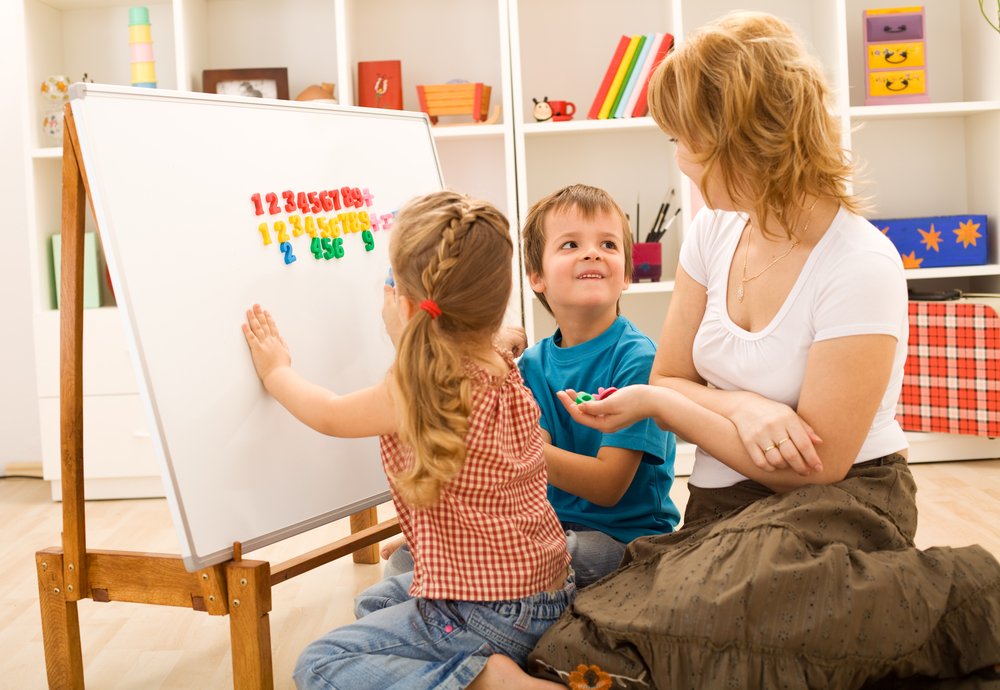Key points:
- Mathematical concepts in young children develop through their daily play experiences.
- Around age two, children start distinguishing between small and big objects, though they may not use numbers yet.
- At age three, they begin to understand the cardinal word principle and show the number of their age using fingers.
- Incorporate “how many” questions and number recognition into everyday activities to help develop your child’s mathematical skills.
Mathematical concepts in young children emerge from the play experiences they have every day. At first, as your baby learns to dance to a song’s beat, you can introduce numbers in songs and rhymes. You can also start by counting small sets of numbers and repeating them: “How many balls are there? One, two. We have two balls”.
Around their second birthday, your little one will start learning about the different body parts and their functions. This will be the perfect opportunity to introduce numbers. “How many hands do you have?”, “Do we have one or two ears?”. At first, they might assign “two” to any collection of objects such as two fingers in each hand or two noses. With practice they’ll expand their understanding and assign the correct language label to objects. They’ll start identifying the difference between one, two, and many.
Around this time your little one will start grasping concepts that underline basic mathematical rules. They’ll start identifying the difference between small and big objects. They know that by adding one or two more blocks to a tower they’ve made it “bigger”, but they have yet to learn how to use the terms one, two, and three. They can discriminate between sets of different sizes, but they have yet to discover the concept of numerosity. Through repetition and exploring their environment, they’ll gradually evolve from this basic idea to more sophisticated mathematical concepts. By practicing building towers over and over again, they’ll repeat the encountered situation and will further develop their logical thinking skills that will help them explain what happened to their block structure.
Research shows that 2-year-olds can start developing an abstract, general mental representation of the counting routine. You might notice that if you ask, “How many blocks do we have?”, your child might think you have more blocks than them if yours are assembled in a way that take up more space. When these kinds of situations arise, try to explain that you both have the same number of blocks; it’s just the way they are spread out that makes it look otherwise. Take each one separately and count slowly, changing the way they are arranged so that they can visualize the whole scenario. They might not get it at first, but with patience they’ll start acquiring more logical and abstract thinking skills. One of these days they might surprise you and say something like “It looked like you had more, but you are right. We both have four”.
Research shows that at around their third birthday, your child will be able to tell their age and show that many fingers to demonstrate it. They’ll also begin understanding that the last number word used in a count tells how many items there are; the cardinal word principle. Findings indicate that children learn the meanings of smaller number words before larger ones within their counting range. So, even though they’ll know up to the number three or four, they’ll be working up the developmental ladder of thinking and numerical skills.
Two things you can do:
- Incorporate the question “how many?” every chance you get. Help them understand what’s behind the answer by visually showing them. Concrete actions will be easier for them to understand and remember when the situation repeats itself.
- Incorporate number recognition and counting to your routine. Point out the numbers on the phone, while you are out on a stroll point out the numbers you see on the mailboxes, the number of trees. Count the number of fruit slices on their plate. The recognition of numbers develops more numerical skills and helps the development of future and more sophisticated mathematical skills. Soon your little one will be able to know how many apple slices they have left after eating one.
Here’s a Kinedu activity to get you started on teaching numbers to your little one!








